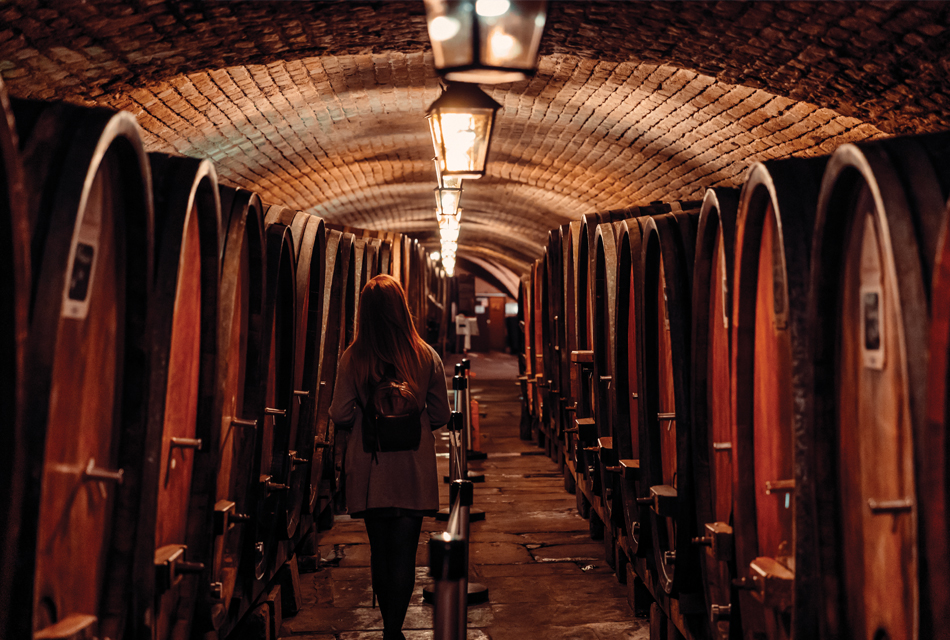
A trip to Alsace, especially to Strasbourg, takes you into a world where every façade tells a story. One of shared history with Germany, yet also of a forward-looking city anchored by its European Parliament.
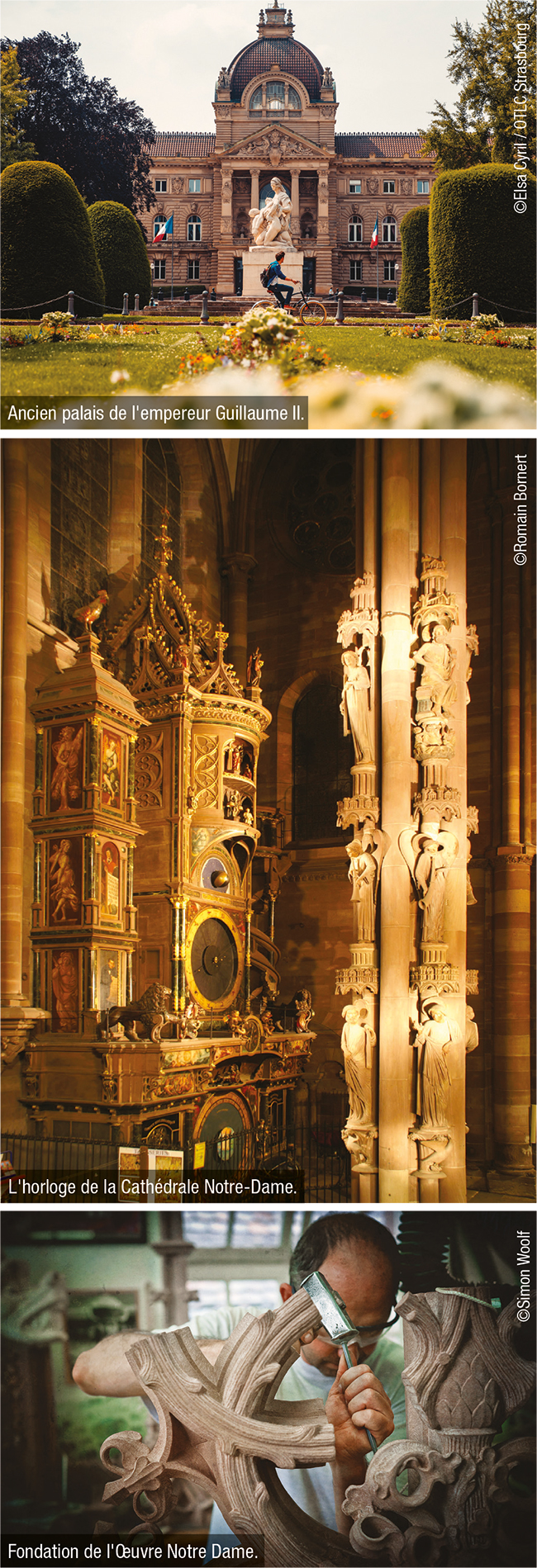
In the Neustadt district, partly listed as a UNESCO World Heritage Site, late 19th-century German architecture and Art Nouveau buildings echo a time when Alsace-Lorraine belonged to the Prussian Empire. Around Place de la République, the former palace of Kaiser Wilhelm II and the National University Library are surrounded by grand green spaces, lending the area remarkable gravitas.
Of course, no visit to Strasbourg is complete without its cathedral. Built between 1048 and 1439, the magnificent Notre-Dame soars 142 meters into the sky, its spire visible from both the Vosges and the Black Forest, and stands as the second most-visited cathedral in France (4 million visitors annually). Step inside for a moment of awe: infinite vaults, stunning stained glass windows (including a contemporary one filled with clever nods to the city and its people), and above all, the astronomical clock. A marvel of craftsmanship, it draws crowds every day for its animated performance of apostles and automata that delights both young and old.
We then dive into the workshops of the Fondation de l’Œuvre Notre-Dame, devoted entirely to the cathedral’s preservation. Listed by UNESCO as intangible cultural heritage, the building continues to benefit from ancestral skills passed down through generations. Here, stonemasons and restorers still work with traditional tools in an ongoing act of reverence for detail.
Strasbourg’s deep Christian roots, evident in its many religious edifices built from the iconic pink Vosges sandstone, do not exclude spiritual diversity. Take the fascinating Vodou Museum, for example. Housed in a former water tower, it has displayed over 1,400 West African religious artifacts since 2014. The result is a unique collection and an unforgettable experience.
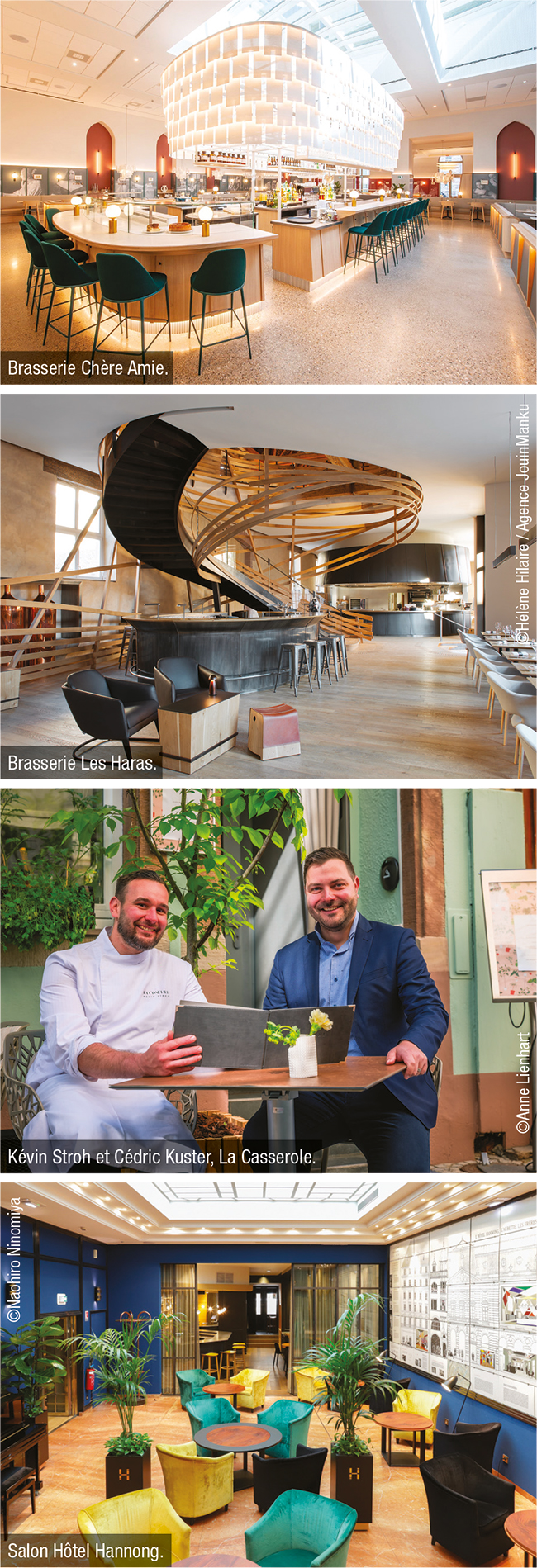
What would Alsace be without its irresistible culinary offerings? Beyond iconic treats like pretzels and kougelhopf, Strasbourg is a haven for food lovers, whatever the budget.
Sample the traditional charm of Winstub taverns or try the signature flammekueche at Mama Bubbelé. For a more eclectic setting, visit Brasserie Chère Amie, housed in the city’s former post office. This spot blends classic and contemporary design around an open kitchen, a striking bar, and a patisserie-style dessert counter. At the Brasserie des Haras, you'll dine in the city’s historic National Stud Farm. With its sweeping woodwork and modern, convivial cuisine led by two-starred chef Marc Haeberlin, the setting is simply spectacular. For a more intimate fine dining experience, book a table at La Casserole, where chef Kévin Stroh (winner of the 2013 Escoffier Young Talent award and former chef for the Lalique group) brings creative elegance to life with the support of restaurateur Cédric Kuster.
Strasbourg’s boldness also shows in its design-led hotels, like the century-old, family-run Hotel Hannong. With a sweeping wooden staircase and elegant Art Deco touches, this four-star gem blends heritage and modernity with grace.
World-renowned for its wines, Alsace also offers exceptional ways to explore its rich viticultural heritage. At the Historic Cellar of the Strasbourg Civil Hospices, centuries of winemaking come to life. This extraordinary cellar has survived since 1395 and showcases antique wooden vats, some still holding up to 26,000 litres of wine. Originally used to store sacramental and hospital wines, the cellar was miraculously spared when the hospital was destroyed in 1716. Revived in 1990, it now holds 2,400 hectolitres of AOC Alsace wines for sale, and a legendary barrel with 300 litres of white wine from 1472 !
In Gertwiller, I meet passionate winemakers who have turned their estate into a space for exchange and storytelling.
Founded in 1778, Maison Zeyssolff has been run by Yvan and Céline Zeyssolff since 1997. The estate spans 20 hectares (10 owned), now certified organic. While terroir and grape expression are paramount, the couple loves to push boundaries. Their daring range includes Pet’nats, a pink-hued Pinot Gris, the aromatic “Fleur d’Alsace”, a skin-contact Gewürztraminer (orange wine), barrel-aged Pinot Gris “Cuvée Z”, and a clay-amphora-aged Pinot Noir called Le Sang de la Vigne.
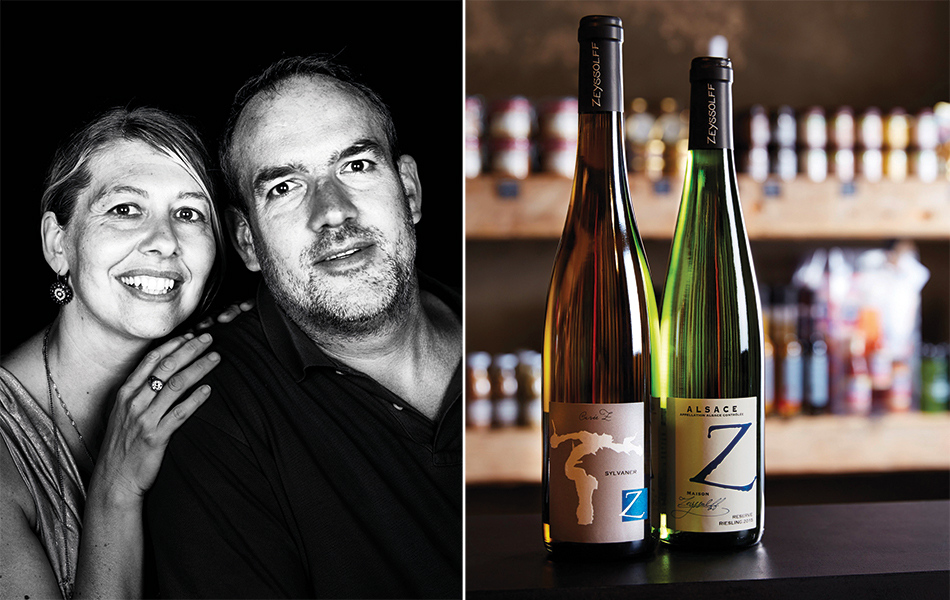
Tasting here reveals the many faces of Alsace wine. Highlights include:Vendanges Tardives Gewurztraminer 2020: rich, exotic, with notes of quince, caramel, and mango, perfectly balancing sweetness and acidity. Crémant Zéro Dosage Millésime Or: ripe fruit aromas, lively mouthfeel, peach and citrus on the palate, with a hint of pastry. Riesling 2023: floral and citrusy with mineral undertones and bright acidity. Pinot Gris Vieilles Vignes 2023: smoky peach and quince notes, finishing with a toasty touch. Sylvaner L’Oubliée Cuvée Z 2023: fresh, floral, with a smooth, buttery finish. Gewurztraminer Cuvée Z 2023: exotic fruits, citrus, spices, and a fine minerality.
To further highlight the region’s terroir, the couple also opened Au Péché Vigneron, a hybrid boutique–wine bar–tea room, and five year-round holiday cottages offering generous Alsatian-style meal baskets.
Their latest innovation? A fully immersive tasting lounge where historic objects, lounge music, modern decor and immersive projections blend into a sensory journey through the soul of Maison Zeyssolff. Hospitality here is spelled with a capital H.
In the hills of Bernardswiller, I meet Martine Motz, warm, welcoming, and as straightforward as her wines. At Domaine Motz, there’s no room for frills, only quality.
In 1982, Norbert Motz (sixth generation) took over the family’s 8-hectare estate, spread across five terroirs. With Martine at his side, he embraced sustainable viticulture in 2002, later transitioning to organics in 2011. Today, 50% of the wines are certified organic, the rest proudly natural.
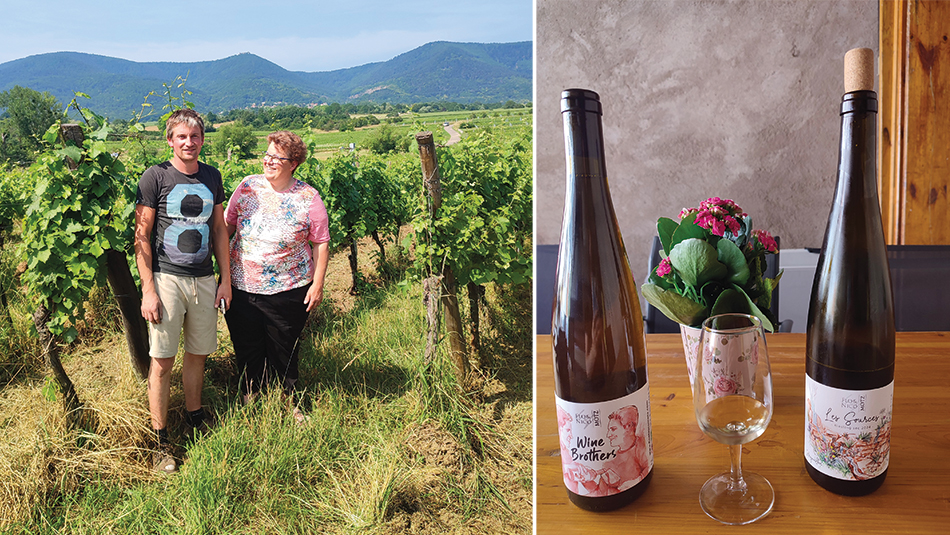
Since 2019, their sons Florent and Nicolas have led a new label: Flo & Nico Motz. Their grapes are hand-harvested, no sulfur is added, and there’s no filtration—just pure, expressive wine. Even their labels reflect this connection to nature, with vibrant, modern illustrations of birds, springs, and wild flora.
Standout wines include: Pinot Gris 2023: honeyed, ripe with pear, quince, and mirabelle, tinged with spice. Les Sources Riesling 2024: grown on clay-sandstone soils, it’s zesty, mineral, and long on the palate, with hints of confit citrus, grapefruit zest, and wet stone. Flo & Nico Motz Colline Libre – Freiberg 2022: an orange wine made from Sylvaner (50%), Gewürztraminer (25%) and Muscat (25%), bursting with bitter orange, dried apricot, rose, and saline freshness.
Visitors are invited to share in this joyful world through guided vineyard tastings or the popular Tu peux boire gatherings hosted by Martine. At Domaine Motz, everything feels like home, and home is a place you want to stay.
From Strasbourg to Gertwiller, through the hills of Bernardswiller, Alsace reveals itself as a land of culture, flavour, and authenticity. Its stones and vines whisper to those who listen, witnesses of a rich past, evolving boldly and beautifully into the future.
Sandy Bénard-Ravoisier